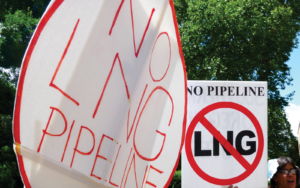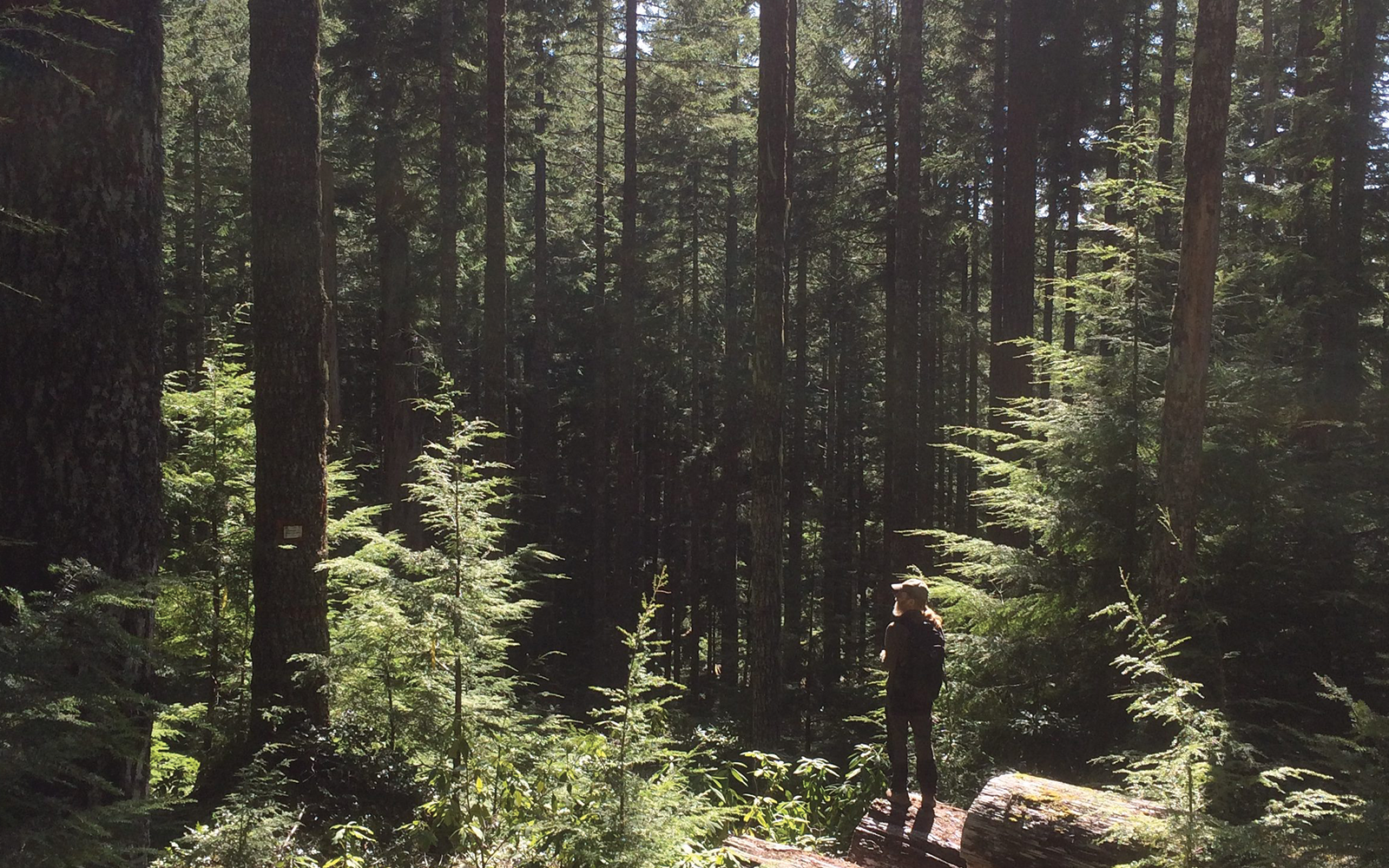Trump Administration Pushing Through Environmental Rollbacks During the COVID-19 Pandemic
 by Gene McCarthy
by Gene McCarthy
Cascadia Wildlands Legal Intern, Summer 2020
It can be exhausting keeping up with the constant barrage of unfortunate news covering the current administration’s breakneck efforts to remove environmental safeguards. Unfortunately, the past six months during the COVID-19 pandemic have been no exception. Despite the global emergency, the Trump administration have not slowed their agenda of environmental deregulation, in some cases, using the pandemic as an excuse to justify it in some vague attempt to jumpstart the economy. These rollbacks have come in several forms, including executive orders and rulemakings, all aimed at removing environmental safeguards in favor of industry interests.
If fully implemented, the rollbacks would have profound effects on Cascadia’s forests. While Cascadia Wildlands efforts focus on the Cascadia Bioregion, we have also taken the time to briefly highlight some of the broader rollbacks that will have a dramatic impact on the human/natural environment.
Executive Orders Weaken or Remove Environmental Protections
In early June, President Trump signed an executive order that calls on agencies to waive the required environmental reviews of infrastructure projects, like highways and pipelines, during the pandemic-driven economic crisis. The executive order uses “emergency authorities” to allow “action with significant environmental impact” without observing the standard requirements of federal laws like the National Environmental Policy Act (NEPA) and Endangered Species Act (ESA). NEPA and the ESA typically require agencies to solicit public input on proposed projects and analyze in detail how federal decisions could harm the environment.
These laws have been the cornerstones of environmental protection for the past fifty years, providing procedural (both NEPA and ESA) and substantive (ESA) requirements when reviewing proposals for major federal actions. They have served as essential tools for environmentalists to challenge arbitrary agency action and will be significantly blunted by this executive order. Activists and lawyers have questioned the legality of the order and accused the administration of using the pandemic to speed up actions that have been moving slowly through the regulatory process.
NO REVIEW OF SALVAGE LOGGING EFFECTS: More impactfully, the administration is pushing rulemaking to gut NEPA, granting a significant new exemption for salvage logging, and eliminating public protest periods. The US Department of Interior’s Bureau of Land Management (BLM) has proposed to create a Categorical Exclusion (CX) that exempts most environmental review and public comment for post-disturbance (i.e., post-fire) “salvage” logging and road building. The scientific community has widely acknowledged that the impacts of post-fire salvage logging and road construction are “pervasive and cumulatively negative.” Similar conclusions were reached regarding salvage logging in other types of recently disturbed forest, such as through insects, disease, windthrow, or drought.
Cascadia Wildlands has signed on to comments, backed by 192 scientists nationwide, opposing the BLM proposal. Those comments express deep concern with the proposal to rely on a categorical exclusion to “fast-track logging as this undermines the agency’s stated policy of utilizing the ‘best available science’ to inform the decision-making process in federal land management.” The BLM already has a CX that allows for expedited salvage logging of up to 250-acres. The proposed rulemaking would expand that acreage by 20-fold, resulting in “needless harm to forests and watersheds and has little basis in the scientific literature.”
“Post-fire conditions serve as a refuge for rare and imperiled wildlife that depend upon the unique biological legacy features created by intense fire. Complex early seral forest produced by natural disturbances is not mimicked by plantation forestry, clearcut logging, or salvage logging that typically removes most if not all biological legacies. Post-disturbance logging and road building, especially with minimal environmental standards under a CX, would degrade these natural values. BLM lands, and public lands in general, provide the last strongholds for terrestrial and aquatic species, important carbon stores, and clean water supplies that will only be even more valued in a rapidly changing climate.”
 ENDING PUBLIC COMMENTS: In addition to the salvage logging exemption, the BLM has proposed eliminating the 15-day public protest period for projects fully reviewed under NEPA. This will eliminate the administrative protest process for timber sales in Oregon, and fits with the administration’s broader effort to stifle public input regarding public land management. The administrative review process provides an opportunity to resolve disputes prior to the issuance of a final agency decision, and is an important democratic tool. Cascadia has signed on to comments by a coalition of groups objecting to the BLM protest rule change. Instead of scrapping the protest period, we believe that the BLM’s alleged intent to promote “collaboration and information-sharing during the NEPA process” could be furthered by the adoption of a predecisional timber sale objection process. The comments we have joined urge the BLM to adopt these procedures rather than the Proposed Rule.
ENDING PUBLIC COMMENTS: In addition to the salvage logging exemption, the BLM has proposed eliminating the 15-day public protest period for projects fully reviewed under NEPA. This will eliminate the administrative protest process for timber sales in Oregon, and fits with the administration’s broader effort to stifle public input regarding public land management. The administrative review process provides an opportunity to resolve disputes prior to the issuance of a final agency decision, and is an important democratic tool. Cascadia has signed on to comments by a coalition of groups objecting to the BLM protest rule change. Instead of scrapping the protest period, we believe that the BLM’s alleged intent to promote “collaboration and information-sharing during the NEPA process” could be furthered by the adoption of a predecisional timber sale objection process. The comments we have joined urge the BLM to adopt these procedures rather than the Proposed Rule.
These changes to our federal environmental laws are not yet certain and Cascadia Wildlands will continue to advocate on behalf of the Cascadia Bioregion, as always, envisioning vast old-growth forests, rivers full of wild salmon, wolves howling in the backcountry, and vibrant communities sustained by the unique landscapes of the region.
Changes to Clean Air Act and Clean Water Act
Though they are out of Cascadia Wildlands focus, there are a few other general environmental rollbacks to the Clean Air Act and Clean Water Act that are especially salient given the nation’s current public health crisis and focus on racial inequality and are worth mentioning. These changes both affect public health and disproportionally affect people of color, and could potentially exacerbate the pandemic by worsening air quality during a pandemic which targets the respiratory system. As an article in Mother Jones pointed out, “the connections between the environment, race, and the COVID-19 crisis are many: Air pollution in poor communities has long caused soaring rates of respiratory and heart disease—underlying conditions that are now worsening outcomes in people who contract COVID-19.”
PROFIT OVER PEOPLE: The EPA is changing Clean Air Act air pollution standards by introducing a cost-benefit analysis, allowing the agency to view pollution economically, without considering other factors, like public health. Like the changes to NEPA, this rule would weaken the very regulations that can protect already vulnerable communities from air pollution. This is especially concerning given the coronavirus pandemic: Recent research has linked air pollution to an increase in death rate of COVID-19. The administration also used cost-benefit analysis in April to justify weakening a rule that forced coal plants to cut mercury emissions. The changes would keep the current Mercury and Air Toxic Standards in place but make them more vulnerable to industry lawsuits and could prevent future regulations from being passed. The National Mining Association, which represents coal-company interests, praised the April decision.

Oregonians have been fighting against the Jordan Cove LNG Project and Pipeline for over 14 years; image from a rally in Salem and Eugene, June 2016 (photo by Francis Eatherington).
WATER IS NOT LIFE: The very same week as President Trump’s executive order waiving portions of NEPA and the ESA, the Environmental Protection Agency finalized a rule revising section 401 of the Clean Water Act, making it harder for states, tribes and the public to block pipelines and other projects that could pollute their waterways. The rule revises the certification process listed under section 401, which, traditionally, has given local governments the power to review new projects to ensure they’re safe for the environment.
The changes to the Clean Air Act and Clean Water Act clearly prioritize industry over public health and should not go unnoticed.
These changes are especially egregious during the pandemic, further endangering Americans’ health during an unprecedented public health crisis.





